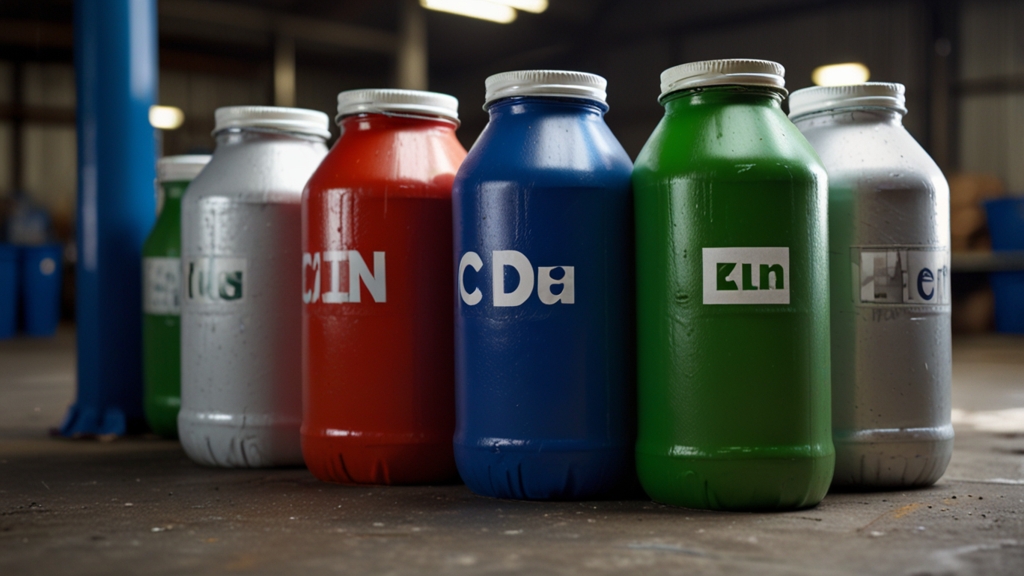Turning Trash into Treasure: The Chemistry of Recycling
Every day, millions of tons of waste are generated around the world. This waste, ranging from plastic bottles to aluminum cans, poses a significant threat to our environment. However, through the marvels of chemistry, much of this waste can be transformed into valuable resources. Recycling has become an essential process in managing waste, conserving resources, and protecting the environment. Delving into the chemistry of recycling reveals the fascinating processes through which trash is turned into treasure.
The Basics of Recycling
Recycling involves the collection, processing, and remanufacturing of materials that would otherwise be discarded as trash. The recycled materials can be used to create new products, reducing the need for virgin raw materials and conserving natural resources. The most commonly recycled materials include metals, plastics, glass, and paper. Each of these materials undergoes a distinct chemical process during recycling, transforming them back into a usable form.
Metals: A Cycle of Melting and Reforming
Metals, such as aluminum and steel, are among the most efficiently recycled materials. The recycling process for metals typically involves melting the scrap metal and casting it into new shapes. Aluminum recycling is particularly noteworthy due to its energy efficiency; melting recycled aluminum requires only about 5% of the energy needed to produce aluminum from bauxite ore.
“Recycling aluminum saves 95% of the energy required to make the same amount of aluminum from raw materials.”
The chemistry behind metal recycling involves breaking down the metallic bonds that hold the atoms together in the metal lattice. When the scrap metal is heated to high temperatures, typically over 660°C for aluminum, these bonds are broken, and the metal becomes molten. Impurities are removed, and the pure metal is then reformed into ingots or other shapes for manufacturing.
Plastics: Breaking Down Polymers
Plastics present a more complex challenge for recycling due to their diverse chemical structures. Plastics are made up of long chains of polymers, which are created through polymerization reactions. Different types of plastics, identified by their resin identification codes, require different recycling processes.
Thermoplastics, such as polyethylene terephthalate (PET) and high-density polyethylene (HDPE), can be melted and reformed multiple times without significantly altering their chemical properties. The recycling process for these plastics involves shredding them into small flakes, washing them to remove contaminants, and then melting and extruding them into new forms.
“PET plastic bottles can be recycled into new bottles, clothing fibers, and even furniture.”
On the other hand, thermosetting plastics cannot be remelted and reformed. Instead, they are typically ground into a powder and used as fillers in other materials or in applications where the plastic's original properties are not needed.
Glass: Infinite Recyclability
Glass is another material that can be recycled indefinitely without losing quality or purity. The recycling process for glass involves crushing the waste glass into small pieces known as cullet, which is then melted in a furnace. The molten glass is shaped into new products, such as bottles and jars.
The melting point of glass is around 1400°C to 1600°C, and the process requires the removal of contaminants to ensure the purity of the final product. The chemistry of glass recycling is relatively straightforward, as the primary component of glass, silicon dioxide (SiO2), remains chemically stable throughout the process.
Paper: Deinking and Pulping
Recycling paper involves reversing the paper-making process. Waste paper is first collected and sorted. The paper is then soaked in water and mixed to create a pulp. This pulp is cleaned and deinked through various chemical processes to remove inks, adhesives, and other contaminants.
After deinking, the clean pulp is refined and formed into new paper products. The chemical processes involved in paper recycling, including the use of deinking agents and bleaching agents, are crucial for producing high-quality recycled paper.
“Recycling one ton of paper can save 17 trees, 380 gallons of oil, and 7,000 gallons of water.”
Overall, the chemistry of recycling plays a crucial role in transforming waste materials into valuable resources. By understanding and optimizing these chemical processes, we can improve recycling efficiency, reduce environmental pollution, and conserve natural resources. Turning trash into treasure not only benefits the environment but also contributes to a sustainable future for all.









